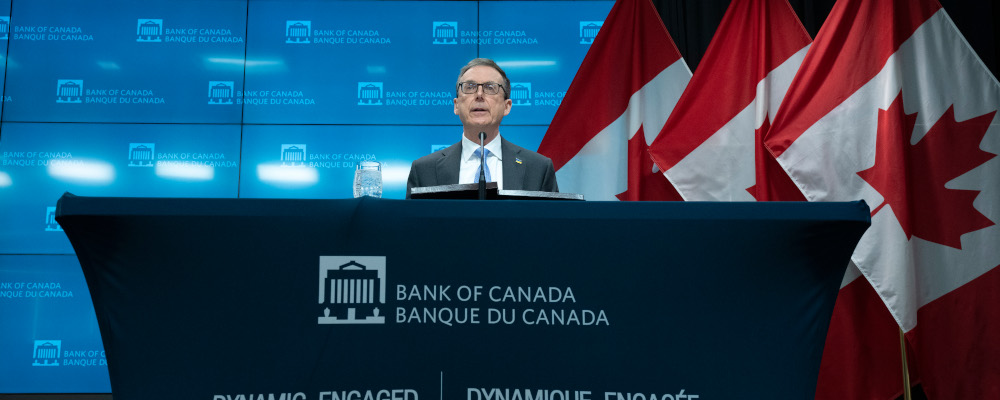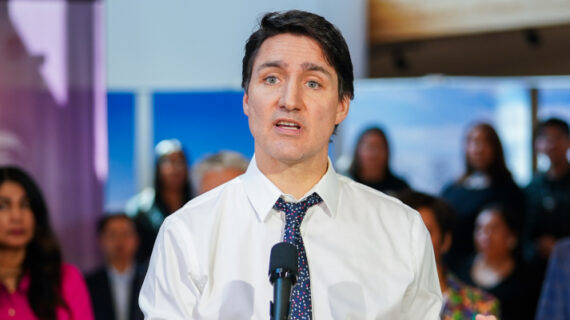Last week’s surprise interest rate hike by the Bank of Canada caught markets and investors off guard.
The working hypothesis going into the rate decision was that more than a month or so of higher-than-anticipated GDP growth and flatlining inflation would be needed to force Governor Tiff Macklem off the sidelines and back into hiking mode. So why the surprise hike? And, more importantly, what does the end of the Bank’s extended six-month pause in the current rate cycle tell us about the future trajectory of monetary policy? Something is afoot, but what?
There is a worrying set of indicators that the overnight lending rate, the central banks’ primary tool to control inflation, has become significantly less effective than we assumed even six short months ago. Inflation is becoming sticky, and this has to do increasingly with factors that are outside the Bank of Canada’s control.
Exhibit A for the case for inflation, as well as rates being “higher for longer,” in Canada is mass immigration. Canada’s outsized population growth, in excess of three percent in a single year, is pushing supply further out of sync with demand and goosing personal consumption in ways that have wrong-footed the Bank of Canada. A rule of thumb is that for each percent of population we add, GDP grows by a similar amount. Add three percent-plus population in twelve months and you are priming the economy in a way that counters the monetary policies of Governor Macklem. In short, continuing record immigration levels this year and for the foreseeable future will make the Bank’s job a lot harder and suggest that last week’s hike is likely the first in a series of hikes, not one and done.
The second factor working against the blunt instrument of monetary policy and its attempts to rebalance supply and demand is fiscal policy. And here it isn’t simply the current government’s alphabet soup of programs and priorities that is inflationary. What is new in the current inflationary fight is the sheer scale of public debts. This matters as we have never before hiked interest rates this fast against the backdrop of federal and provincial debt running at 75 percent of GDP.
To state the obvious, every percent increase in the bank rate creates a corresponding surge in deficit spending related to interest payments. These payments are injected directly into the economy further stimulating demand (three-quarters of government bonds are held domestically). Yes, these payments generally go to the upper quintiles of income earners, pension funds, etc. but we are talking big numbers when you go from almost zero interest rates to close to five percent in just over a year.
Total federal and provincial debt interest payments for this year are estimated at a whopping $68 billion or the equivalent of the entire annual benefits of the CPP and QPP pension plans. That is up thirty percent over the previous twelve months and will continue to increase as governments borrow aggressively to fund record deficits against a backdrop of steadily rising interest rates orchestrated by their very own central banks.
The tsunami of interest payments from both levels of governments to domestic bondholders is a not-so-mini “doom loop” that explains, in part, why the six-month pause on hikes was a bust. Going forward the salutary effects of future hikes will continue to be blunted by ever-increasing cash transfers from government, to the tune of tens of billions of dollars, going again directly into the economy via interest payments. It seems like debts and deficits matter not in the abstract as a long-term burden on future generations but as an accelerant of inflation in the here and now that is compounding the more rates rise.
The last consequential and ongoing development that is undoing the demand-destroying effects of Governor Macklem’s monetary policy is how commercial banks have chosen to respond to higher rates. Instead of passing rate hikes through to mortgage holders in the form of higher debt servicing costs as was the practice in past rate cycles, lenders are “innovating” and permitting the largescale negative amortization of mortgages. This is where the borrower continues to make a fixed payment with the unpaid interest added to a growing principal. Undeniably this is helping keep possibly tens of thousands of people in their homes and ensure that a glut of foreclosures and forced sales don’t cause a plunge in national home prices, albeit at the cost to borrowers of larger, ever-increasing loan principals.

But the banks’ “extend and pretend” debt servicing policy, affecting tens of billions of dollars of mortgage debt, is undeniably blunting the effects of rate hikes. Put another way, the bank rate has to bite somewhere. One-third of Canadians who own a home have no mortgage debt and as such aren’t affected by higher rates. Absent extracting a pound of flesh from homeowners who have significant debt, monetary policy struggles to get meaningful traction on the economy as seen in the latest GDP numbers which show continuing high levels of consumer spending in defiance of higher rates.
So where does all this leave the Bank of Canada and its inflation fight?

Combined, these anti-disinflationary forces and policies suggest that the much-discussed “stickiness” we are seeing when it comes to the consumer price index may not really be a story of the after-effects of snarled supply chains, the disruption of the war in Ukraine or pandemic-related personal savings or, in other words, the usual excuses for persistent inflation we continue to get from central bankers. Rather, this time could be different, that the backdrop for the current inflation fight is much more specific to this moment, and its dynamics encompassing the reality that Canada is a high-debt, high-immigration country that has bet the proverbial farm on real estate and, as such, cannot let monetary policy work on debtors in its usual cruel and efficient way.
To Tiff Macklem’s credit, he is resolute about returning inflation to the Bank’s two percent target. His determination combined with anti-disinflationary forces at work in Canada strongly indicates that this week’s hike will not be the Bank’s last.
A much higher terminal rate for this cycle (well north of five percent) is likely in our near-term future. And yes, monetary policy will finally win out over inflation but at a significant cost to the economy and to our national stores of wealth, like housing. As the old saw goes “There ain’t no such thing as a free lunch.” Our generation’s fight against inflation didn’t have to end with what will likely be a painful and protracted recession brought on by crushing interest rates. We could have learned from the experiences of the 1970s. Instead, we have created a dangerous brew of forces and policies, increasingly hardwired into our economy, that are acting against monetary policy. The bill is now coming due for these policy choices. It’s a big one and it’s going to hurt.




